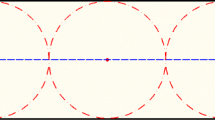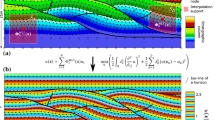Abstract.
The medial axis transform provides an alternative representation of geometric shape that has many useful properties for analysis modeling. Applications include decomposition of general solids into subregions for mapped meshing, identification of slender regions for dimensional reduction and recognition of small features for suppression. To serve these purposes effectively, it is important to be able to mesh the medial axis so that its geometry is adequately approximated. This paper describes a general idea, which is based on equal distance criteria, for adaptive mesh refinement on the medial axis, assuming its topology has been defined. The completed set of theories and examples for 2D planar objects and 3D solid objects is presented.
Similar content being viewed by others
Author information
Authors and Affiliations
Additional information
ID="A1" Correspondence and offprint requests to: C. Armstrong, The Queen's University of Belfast, Ashby Building, Stranmillis Road, Belfast, BT9 5AH. E-mail: c.armstrong@qub.ac.uk
Rights and permissions
About this article
Cite this article
Ang, P., Armstrong, C. Adaptive Shape-Sensitive Meshing of the Medial Axis. Eng Comput 18, 253–264 (2002). https://doi.org/10.1007/s003660200022
Issue Date:
DOI: https://doi.org/10.1007/s003660200022




